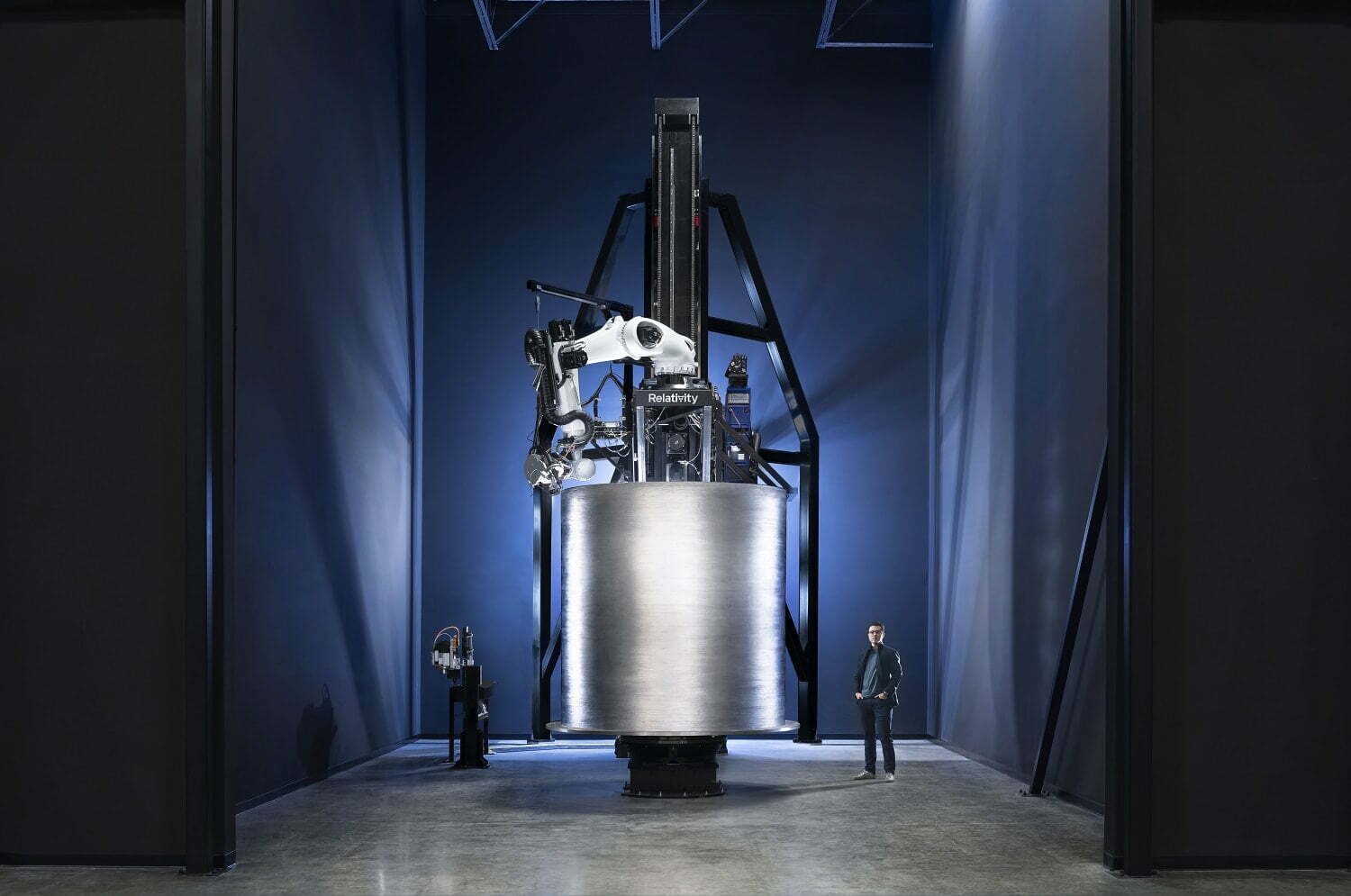Imagine a world where rockets are printed, not built.
That’s exactly what American aerospace manufacturing company Relativity Space is doing. By 3D-printing the structures and engines of their rockets, they are simplifying the rocketry supply chain and increasing overall rocket system reliability and performance.
Thanks to their innovative approach, the design and production process is more efficient and optimised, resulting in rockets that are not only faster to build but also more cost-effective. Their method allows them to produce fully reusable rockets “from raw material within 60 days,” according to the company’s website.
This seems almost hard to believe — but the facts check out. And with the use of autonomous robotics and AI, the building process is streamlined, reducing the need for human intervention and minimising the risk of errors and human injury during the production process.
- Advertisement -
The company has some ambitious goals, to say the least, aiming to reach Mars by 2024. In comparison, SpaceX is aiming to reach the red planet during the latter part of the 2020s, according to SpaceX President and Chief Operating Officer Gwynne Shotwell.
So how does one 3D print a reusable rocket that’s headed for Mars?
The process
3D printing is nothing new. But what sets Relativity Space apart from the rest? How do they use 3D printing to create the most advanced rockets in the world?
Relativity has conducted over 500 static engine tests, collecting a wealth of data on how its engines perform. This data is then fed into their AI algorithms, which analyse and optimise the engine’s design. This allows them to print a new version of the engine at a rapid pace, using their in-house developed and world’s largest 3D printer in a fraction of the time it would take competitors to build.
The result of this approach is a rocket engine that is 10 times cheaper to produce with 100 times fewer parts than any other similar rocket. By using 3D printing technology and AI to combine elements, the company has been able to reduce the number of potential points of failure too.
This not only makes their rockets more reliable, but it also makes them more efficient, reducing the weight and increasing performance. All improvements of which that are needed for the company’s first commercial Mars mission in 2024.

Tim Ellis, CEO of Relativity Space, told Veritasium that the printed materials are “stronger than they would be [if] built traditionally.” Seems counterintuitive, but Ellis explained that Relativity achieved this by using custom in-house developed alloys that are a trade secret.
Another major benefit of 3D printing is that it allows for rapid iteration; quick development and testing turnover times, another significant advantage over Relativity’s competition.
- Advertisement -
3D printing limitations
While 3D printing has many advantages, it also has its limitations. The technology is not yet advanced enough to be able to print certain parts, such as electronics or large structures, and the materials available for printing are also limited. Another major problem for the aerospace industry introducing 3D printing on a mass scale is quality control. Unfortunately, it can be challenging to ensure that 3D-printed parts meet the same standards as traditionally manufactured parts.
Despite these limitations, many companies, including Relativity Space, and NASA are investing in research and development to push 3D printing technology to the absolute limit for its applications in the space industry. By overcoming these limitations, 3D printing can become a game-changer in the aerospace industry, allowing for more affordable, efficient, and reliable spacecraft and space stations to be built.
Relativity Space is truly at the forefront of space exploration, using technology to achieve things that were once thought impossible. Their approach is not only game-changing, but it’s also inspiring, proving that with the right tools, we can achieve anything.




